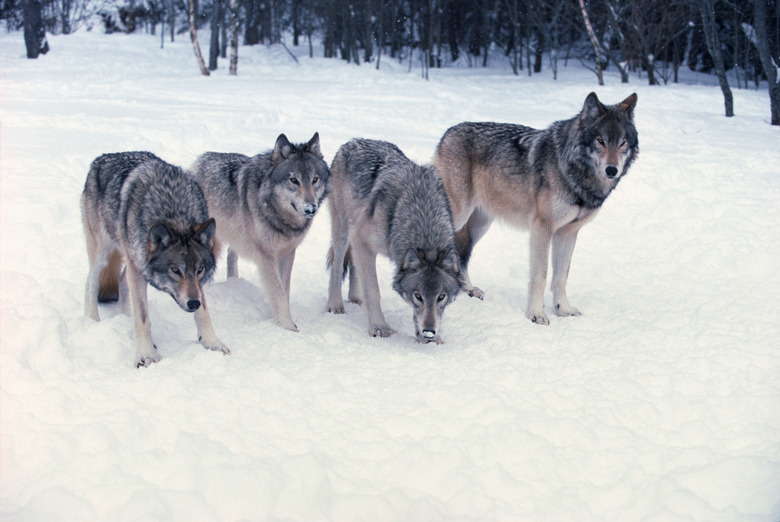How Do Wild Wolves Hunt In A Pack?
Wolves, even if judged only on their ability to adapt to different environments, are among the most successful animals on earth. They are able to exist and thrive in a variety of different climates and terrains. One thing that is essential to their survival is the ability to work together while hunting, which improves the probability of success.
There are several elements of how wolves hunt in a pack successfully.
Wolf Facts: Dynamics of a Pack of Wolves
Wolf Facts: Dynamics of a Pack of Wolves
One of the lesser known wolf facts is that a pack of wolves is more than just wolves hunting together. They're actually complex social groups complete with a defined hierarchy, loyalty to pack members, social bonds, and dominant pack leaders (of either gender).
Wolves sometimes hunt for smaller prey in peak prey seasons on their own, but they'll come together for protection and increased hunting success for large and/or dangerous prey. Pack members always benefit from the pack and will often form intensely loyal social bonds with each other.
Wolves Hunting: Start by Locating Prey
Wolves Hunting: Start by Locating Prey
Wolf packs occupy and control a specific area of land known as a "territory." The size of the territory can vary greatly based on several factors, including the number of wolves in the pack, the abundance of prey, and the geographic location of the territory. Some territories in Alaska and Canada can cover 1,000 square miles. Just locating prey within an area that large can be a challenge. Operating in a pack means there are more wolves looking for prey.
Stalking Prey
Stalking Prey
Once the pack has located prey animals from a distance, the pack begins stalking. Wolves' primary prey are large animals, such as:
- white-tailed
- mule deer
- moose
- elk
- caribou
Confronting Prey
Confronting Prey
When ready, the wolves hunting will confront the prey animals in force and often try to single out sick, hurt, or young animals to attack. Most animals will flee when confronted, although larger animals such as moose or bison may stand their ground and fight. In this situation, the wolves will circle and continually test for weakness, then attack when they find an advantage. Wolves may choose to try other prey rather than risk attack on a large animal willing to fight.
Chasing Prey
Chasing Prey
If the selected prey flees, the pack will pursue it to make the kill. While wolves can hit speeds of over 35 miles per hour for short distances, they can also run for extremely long distances. Wolves have been observed employing strategy in pursuing prey, chasing animals to other waiting wolves, or having members of the pack lag behind to catch prey that circles.
Killing Prey
Killing Prey
Wolves take down animals by latching onto either their nose area or onto the rump and bringing them to the ground. Wolves do not hamstring the animals to cripple them, although this has been a common belief for years. While the numbers of the pack aid in bringing down large animals, an individual wolf is a formidable killer and well able to take down an animal on its own. The prey usually dies of either blood loss or shock.
Once the prey has been hunted, the alphas (usually one male and one female) will eat first. Then, it will go down the ranks of the pack hierarchy in turn until the entire animal has been eaten.
Cite This Article
MLA
J.D., Randall Pierce. "How Do Wild Wolves Hunt In A Pack?" sciencing.com, https://www.sciencing.com/do-wild-wolves-hunt-pack-8769011/. 31 May 2019.
APA
J.D., Randall Pierce. (2019, May 31). How Do Wild Wolves Hunt In A Pack?. sciencing.com. Retrieved from https://www.sciencing.com/do-wild-wolves-hunt-pack-8769011/
Chicago
J.D., Randall Pierce. How Do Wild Wolves Hunt In A Pack? last modified August 30, 2022. https://www.sciencing.com/do-wild-wolves-hunt-pack-8769011/
